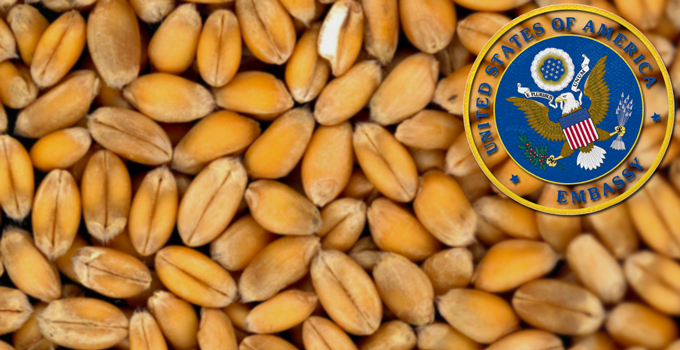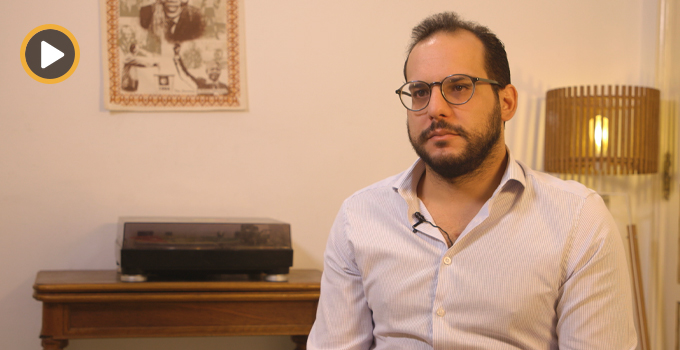
With a grant of 1.3 million dollars from the US State Department, the not-for-profit corporation US Grain Council (USGC) announced the establishment of a Regional Center for Feed Manufacturing whose headquarters are Tunisia’s National Agronomy Institute of Tunis (INAT). Initially, some 20 professionals in the sector will take an online course with Iowa State University (ISU), another partner in the project. 10 to 12 of these individuals will then be chosen to spend two weeks for further training at ISU and will constitute the « core group of trainers who will pass the latest information in animal nutrition and feed modernization to the Tunisian livestock and feed industries ». As early as October of this year, INAT will host the first training sessions for « nutrition experts, feed millers, and poultry, dairy, beef and aquaculture producers », according to the USGC. Past the grant period, the idea is that the Center will become financially autonomous through such trainings and draw professionals in the industry from across North Africa and the Mediterranean. Interest in « boosting compound feed production and stimulating demand » for American grain in Tunisia is explained in part by growing competition from Black Sea Countries, notably Ukraine, Romania and Russia, as shown on the USGC market profile page for the country. Described as a « price sensitive market with less emphasis on quality », Tunisia is deemed to have « significant growth potential » for US grain imports:
| Commodity | 2014/2015 Total Imports | 2014/2015 Imports from U.S. | 2015/2016 Total Imports | 2015/2016 Imports from U.S. | 2015/2016 U.S. Market Share | Market Assessment |
|---|---|---|---|---|---|---|
| Barley | 400 TMT | 0 | 688 TMT | 0 | 0% | Spot market opportunity |
| Corn | 1.1 MMT | 59 TMT | 1.1 MMT | 178 TMT | 17% | Very competitive market |
| Sorghum | 0 | 0 | 0 | 0 | 0% | No market opportunity |
| Ethanol | No Data | 98 mil L | No Data | 0 | 0% | Some trade occurring |
| Co-products | 4 TMT | 4 TMT | 14 TMT | 14 TMT | 100% | New product, significant growth potential |
Limited diversity and high imports of raw materials
Taha Najar is INAT’s project director for the training center. He is also a professor at INAT and animal feed engineer. Before talking about the project underway, Najar gives Nawaat a rundown of Tunisia’s animal feed sector. Today, of 600-plus registered feed manufacturers, there are 150 operative factories. Of these, 15 are large-scale factories with a production capacity over 15-20 tons of feed per hour. Among the remaining medium to small operations, a large proportion are « integrated » non-commercial units, or breeders who produce exclusively for their own livestock. With a total production capacity of about 4 million tons per year, actual production is an estimated 2.7 million tons annually, concentrated in four regions on or near to the coast: Sfax, Nabeul, the Greater Tunis and Zaghouan. Najar highlights two particularities, or more specifically, the two « handicaps » of Tunisia’s feed industry. First of all, he says, Tunisia is among the rare countries which use a limited range of raw materials. These are mainly corn, soy meal, barley and wheat bran, which constitute of more than 90% of materials used in feed manufacturing. Part of the reason is that Tunisia is a small competitor, both in terms of production and market capacity. With only so much surface area available for agricultural use, production can be increased and diversified to some extent through managing crop rotations and yields. « Nonetheless, we are forced to make a choice. Is it better to grow what is needed for human consumption, or to grow more raw materials for animals? Faba bean, for example, grows abundantly in Tunisia and farmers know how to cultivate it. Currently we produce some 30 million tons per year, whereas we use 500 to 600 million tons of soy per year. From the 30 million tons of faba produced, a part of this goes directly to breeders for livestock, and what is left for manufacturing is not interesting for factories which require a consistent supply of materials », explains Najar.
Little fish in a sea full of bigger fish
Aside from surface area cultivated and crop yield, a major factor in the equation is price, and leguminous seeds such as fabas are not only relatively expensive, but also are not as protein-rich as soy. “For this reason, if a feed manufacturer finds soy on the market for one dinar and faba for 900 millimes, he’ll buy the soy”, says Najar. Countries with large markets that purchase significant volumes of raw materials benefit from significantly lower costs. By comparison, Tunisia purchases in small quantities and, what’s more, « the more I diversify the materials I purchase, the less I will import in quantity for each one, meaning that the cost remains high ». Plus, the engineer points out, the country does not have the storage capacity for large volumes of imported gain. As a result, Tunisia continues to import proportionally higher volumes of corn and soy, both of which (with the exception of corn seed) used for animal feed are 100% genetically-modified. Of course, he observes, there is no country in the world that does not import corn or soy, even the countries that produce them. And while Europe and the US withstand price fluctuations of these raw materials by reducing and substituting ingredients as needed, the Tunisian market remains highly sensitive to price spikes.
Somewhere between importing everything, and self-sufficiency, there exists a middle ground. Najar supposes that « if I produce 20 or 25% of my needs, that represents a certain autonomy and reduces my dependence on the market ». He cites a number of alternative raw material options—fish powder, peanut meal and manioc among others—that could be sourced from African markets. But these products are not currently available since there is no strategy to incorporate them. After all, it is not up to each breeder to prospect and determine which materials to import for feed production: « It’s an entire chain, an organization for diversification that must be in place ». Najar imagines that the State will have to step in, much in the same way that it did with agricultural subsidies in the seventies. But the financial means are not there, and for now, the Ministry of Agriculture’s ability to intervene is limited. « Financial motivation is necessary and also awareness-raising at the level of local administrations, through the Regional Offices of Agricultural Development (CRDA) to orient farmers in their production ». In the meantime, INAT and the Ministry of Agriculture are working on a smaller scale to implement programs that will develop the production of canola and faba.
Cereals, seed-saving, and food security
31/01/2016

And now there is the training center. If the project promises to address questions of production capacity and quality, questions around the sector’s self-sufficiency are less clear. On this point, the USGC’s Regional Director abstained from replying to our questions. As did the Tunisian Grain Board (OC), which ran the country’s first animal feed factory in 1973, respond to our inquiry regarding the aspect of the new project that serves to promote the use of American grains in Tunisia and ultimately North Africa and the Middle East. Could the aspect of the project promoting demand for American grains work against Tunisia’s interest in finding a better balance between the production and importation of raw materials? Najar’s response implies that the answer lies in decisions and policies that organize the sector. For the animal feed engineer, Tunisia’s « lack of development in the production of grain and animal feed is not the result of imports: we import because we do not produce sufficient grain. There are certainly choices to be made… Decision-makers need to have a long-term strategy that encourages, in part, a gradual increase in production capacity. If now we are at 2.7 million tons of feed annually, maybe in 10 years we will produce 3 million tons or more, and of this we can set a goal that 20% be domestically produced ».





nice article.
an emphasis must be put on feed production. I’m surprised to see the country importing poultry feed !!
agri business has always been neglegted, and an agri engineer is merely considered as “cow engineer” …
this is not the case in israel, where abri business is a big business.
israel is 50 % desert, so is Tunisia.
why don’t you follow their agri way ??
https://en.wikipedia.org/wiki/Agriculture_in_Israel